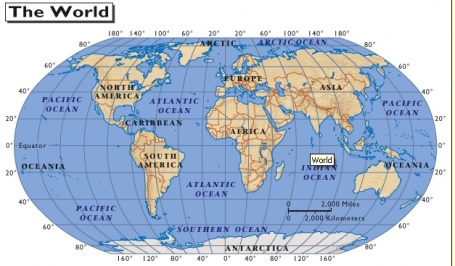Durban to East London
From CruisersWiki
You should provide a map of the of the passage with the route clearly shown. The map should be preferably well annotated and with a scale in nM (nautical miles). Place the map to the right .
Description
(See Durban about procedures for leaving the port)
Distance: 255 miles.
The trip from Durban to East London is 255 miles with absolutely no possibility of a safe bolt-hole or shelter the entire way. Therefore, dependant on the size of your yacht, at least two or three days of favourable weather are imperative.
It is suggested to leave Durban at the tailend of a southwesterly blow when the barometer has topped out, preferable at about 1020 millibars. The barometer is, in fact, an invaluable forecasting tool along this coastline for predicting weather conditions and, in particular, the advent of southwesterly gales.
Clear customs, Immigration, etc, at the beginning of a southwesterly, which will normally blow from thirty-six to forty-eight hours. Leaving Durban, sail about 3 miles seaward of the 200 meter contour as soon as possible as this is where the south flowing current will be the strongest. It also means that in the event of you not reaching East London before another southwesterly, you can duck inshore very quickly and avoid being caught in the middle of the current with the possibility of severe wave conditions developing.
You will find that on average the 200 meter contour will give you a distance offshore between Durban and East London of approx. 12 miles.It also means that at night you will be in range of lighthouses, and secondly, most northbound shipping will be further inshore of you.
The coast between Durban and a few miles south of Port Edward (approx.90miles) contains an almost unbroken ribbon of coastal resorts and urban developments. Between these, and further inland are lush sugar cane plantations, rolling hills and pine forests.
The shoreline consists of white beaches with stretches of rock outcrops and ledges, none of which extend further than a mile offshore, with the exception of Protea Reef and Aliwal Shoal.
A few miles SW of Port Edward is the brightly lit and conspicuous Wild Coast Sun Hotel. From here continuing roughly SW the coastline has a far more rugged appearance. Sandy beaches still prevail, however, rock outcrops and sunken reefs often extend a few miles seaward.
Start approach to East London from abreast of Cape Morgan lighthouse (assuming that you are in the strength of the Agulhas current about 10 miles off), set course to East London breakwater. Be aware that the current is sometimes very strong.
NOTE: Port St Johns and Port Shepstone are NOT ports and are considered unsafe anchorages in almost any conditions.
AGULHAS CURRENT (for this section)
The edge of the continental shelf (200m) lies about 5 miles off Durban's south breakwater and continues SW between this, and 3 miles offshore, widening to roughly 13 miles off East London. The current is usually strongest at the sea side of the shelf edge with an average rate of 3 knots. Off East London the current is normally at it's strongest often attaining rates of 6 knots. After southwesterly gales have been blowing, onshore sets may be encountered especially in the south of this region. A weak northerly counter current may be experienced close inshore.
Charts
- SAN 128 to 131, 135 or SAN 59 & 60 or BA2087 & 2086
Weather
See Weather Information for this passage.
- Marine weather links Comprehensive Regional Marine Weather Forecast Information.
Sources for Weather forecasts:
Weather Windows
Give the best time/s of year for this passage and expected weather conditions.
East London Port Approach
When approaching the South Breakwater, care must be taken during and after SW gales, due to heavily breaking seas.
Radio procedure - Dual watch is kept on VHF channels 16 and 12. Call up East London Port Control on channel 16 for clearance to enter harbour. Port Control will direct you to the Yacht Basin.
Mariners are strongly warned of the danger that exists of ABNORMAL WAVES - see seperate section.
Communication
- South African Radio Nets HF and VHF
Alse see World Cruiser's Nets
Possible Departure Points
-
 Durban [[Durban to East London#Durban|Durban]] 29°52.511'S, 031°00.514'E
Durban [[Durban to East London#Durban|Durban]] 29°52.511'S, 031°00.514'E
Route/Suggested Stopovers
List the route and the suggested stopover points (in sequence), including their coordinates, and some description.
- Starting from
 Durban [[Durban to East London#Durban|Durban]] 29°52.511'S, 031°00.514'E
Durban [[Durban to East London#Durban|Durban]] 29°52.511'S, 031°00.514'E
- Finally you arrive at
 East London [[Durban to East London#East London|East London]] 33°01.578'S, 027°55.346'E
East London [[Durban to East London#East London|East London]] 33°01.578'S, 027°55.346'E
Possible Arrival Points
-
 East London [[Durban to East London#East London|East London]] 33°01.578'S, 027°55.346'E
East London [[Durban to East London#East London|East London]] 33°01.578'S, 027°55.346'E
Distance & Duration
255 miles.
Forums
List links to discussion threads on partnering forums. (see link for requirements)
Links
- Cruising Connections (Durban) Charts, guides, Pilots, etc.
References
- Southern Africa Cruising Notes - West to East by Tony Herrick
Comments
We welcome users' contributions to the Wiki. Please click on Comments to view other users' comments, add your own personal experiences or recommend any changes to this page following your visit.
Verified by
Date of member's last visit to Durban to East London and this page's details validated:
| This page has an outline in place but needs completing. Please contribute if you can to help it grow further. Click on Comments to suggest further content or alternatively, if you feel confident to edit this page, click on the edit tab at the top and enter your changes directly. |
| |
|---|
|
Names: Lighthouse |
